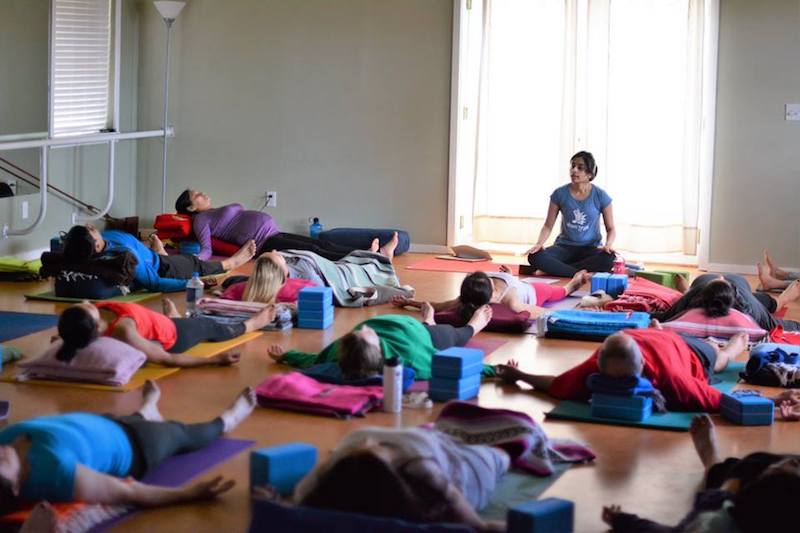Pranayama is an integral part of Yoga. It can be most easily understood as the yogic art of breathing. This does not mean a mere inhale and exhale. Pranayama is much more than that. Ancient yogis spent centuries developing the technique and understanding of this yogic art of breathing. Today, unfortunately Pranayama is more of a lost tradition. Modern yoga practitioners are more obsessed with asana or the physical practice alone and do not care much for the nuances of this practice.
How are yoga poses and pranayama related?
All of yoga is structured into what is called “ashtanga yoga marga” or the eight limbs of yoga. These were given to us by Patanjali, over 5000 years ago in a book called “The yoga sutras“. Today all yoga teachers and students accept this text to be one of the most important yogic texts of all times. In the yoga sutra text, Patanjali discusses the 8 limbs of yoga. They are
- Yama (Restraints)
- Niyama (Observances)
- Asana (Physical Practice)
- Pranayama (Regulation of Breath)
- Pratyahara (Withdrawal of senses)
- Dharana (Concentration)
- Dhyana (Meditation)
- Samadhi (Self- realization)

While we will not go into all the details of the 8 limbs of yoga here. Notice how Pranayama comes after asana. Meaning yoga poses are to be followed up with yogic art of breathing. The 2 are inseparable. Once the yoga student has mastered a good amount of bodily control, discipline, understanding and body awareness. The next natural step is to connect more intrinsically with one’s own breath.
What is Pranayama?
Pranayama literally means, extension of life force. Prana = life force (subtle), breath (gross) and ayama = extension, lengthening, to stretch. Pranayama is largely a seated silent practice.
Why is Pranayama not available easily?
The practice requires discipline, commitment, and maturity from the yoga practitioner. It also demands that one be able to stay still and seated for long periods of time. To the naked, untrained eye this appears to be boring, non-dynamic (when compared to asana) and not very yoga-like. So yoga practitioners today, disregard the value of the life-giving breath.
More importantly, yoga teachers themselves do not practice pranayama, leave alone teach it. One needs to put in extra hours of study and effort to find yoga teachers who understand this subtle art. It is easier to teach asana than it is to teach pranayama.
The practice for beginners –
Below is an audio recording of a sample beginner friendly Pranayama. This recording is meant to be a supplement tool to learning Pranayama in class. And should not be used as the only means of learning Pranayama. Pranayama is best learnt under the guidance of a skilled teacher.

Listen to sample audio here.
If you would like to purchase the complete class recording, please pay here. Once you have made your purchase, your download link will be sent to you within 24hours.
All sales are final and cannot be refunded or traded for other recordings.

